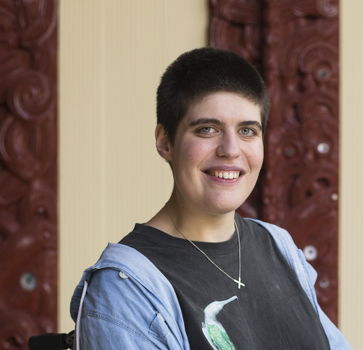Disability rights
Benefits and compensation: What you’re entitled to from Work and Income and ACC
Work and Income benefits
You can get the Supported Living Payment if you’re 16 or older and your ability to work is permanently and severely restricted because of a health condition, injury or disability. You may also be able to get additional payments for ongoing disability costs.
In this section, we summarise those benefits and allowances. For more information about the benefits and whether you can get them (including residency requirements), see: “Dealing with Work and Income”.
Main benefit for disabled people: Supported Living Payment
Social Security Act 2018, ss 16, 34–37 Social Security Regulations 2018, reg 10
You can get the Supported Living Payment if you’re 16 or older, meet residency requirements, and you’re either totally blind, or permanently and severely restricted in your ability to work because of a health condition, injury or disability. There’s some residency requirements too, see: “Dealing with Work and Income”.
You have to be unable to regularly work more than 15 hours a week, and this incapacity must be expected to continue for at least two years. If your condition is terminal, you have to show that you are not expected to live for two years. A doctor will generally need to assess you and certify that you qualify.
For an overview of the Supported Living Payment rates, go to workandincome.govt.nz.
If Work and Income refuse to grant you the Supported Living Payment benefit on medical grounds, you can apply for a review by the Medical Appeals Board. If you’re refused on the basis that your income is too high, you can apply for a review by a Benefit Review Committee (see: “Challenging Work and Income decisions: Reviews and appeals”).
Supported Living Payment for totally blind people
Social Security Act 2018, sch 4, pt 3, cls 2-4
You’ll also automatically qualify for the Supported Living Payment if you’re totally blind and you’re 16 or older. If you’re in employment as well, you’ll be entitled to an additional allowance (up to 25% of your income) on top of the Supported Living Payment. The amount of additional allowance you get depends on your income.
Help with ongoing disability costs: The Disability Allowance
Social Security Act 2018, ss 84–89, sch 8, cl 44
The Disability Allowance pays you back for the costs of goods and services that directly help you with an ongoing health issue. To qualify, you must have an impairment that:
- has reduced your independent functioning to the point that you need ongoing support for the normal functions of life or need ongoing supervision or treatment by a health professional, and
- is likely to continue for at least six months.
Disability Allowance is usually granted for doctor visits, prescriptions, alternative treatments (for example, physiotherapy and acupuncture) and special foods. You’ll need to provide Work and Income with invoices, quotes or receipts, so it’s a good idea to save them before you apply. For more information about what costs you can claim for, see: “You’ve got a serious illness, injury or disability”.
The allowance is paid as a weekly (or fortnightly, if you’re receiving other fortnightly payments from Work and Income) amount, up to a maximum. If your actual costs are more than the maximum, the difference can be covered by another benefit called Temporary Additional Support.
Decisions about whether particular costs can be claimed can be appealed to a Benefit Review Committee (see: “Challenging Work and Income decisions: Reviews and appeals”).
Who can get the Disability Allowance?
The Disability Allowance is income-tested, which means that you can only receive the Disability Allowance if your income is under a certain amount. The income threshold depends on the size of your household.
However, there is no income limit if you’re totally blind. As well, if you’re considered “severely disabled” by Work and Income then they can choose not to apply the income limit. This is called the “income exemption”.
To determine severe disability for the purposes of the income exemption, Work and Income will look at how your disability affects:
- your participation in employment
- how you can look after yourself
- how you can participate in the community.
The question is whether you’re extremely limited in doing those things. Importantly, there is no standard medical assessment so it’s up to Work and Income. Your case manager should look at all the available information about you, including anything you share with them about your disability.
For more information on the Disability Allowance including the income limits, go to www.workandincome.govt.nz.
Help with children’s ongoing disability costs: The Child Disability Allowance
Social Security Act 2018, ss 79–83
The Child Disability Allowance is paid to a caregiver for a child who has a disability and so needs constant care and attention. The impairment must be permanent or likely to last for more than a year. You’ll need to get confirmation from a doctor that you qualify for the allowance.
The Child Disability Allowance isn’t income-tested, and so even people on very high incomes can get it.
If Work and Income refuse you a Child Disability Allowance on medical grounds, you can appeal to the Medical Appeals Board.
In addition to the Child Disability Allowance, you may also be able to get the Disability Allowance for the child (see above).

